Like many fruits in the natural world, there are a lot of different varieties of melon fruits out there.
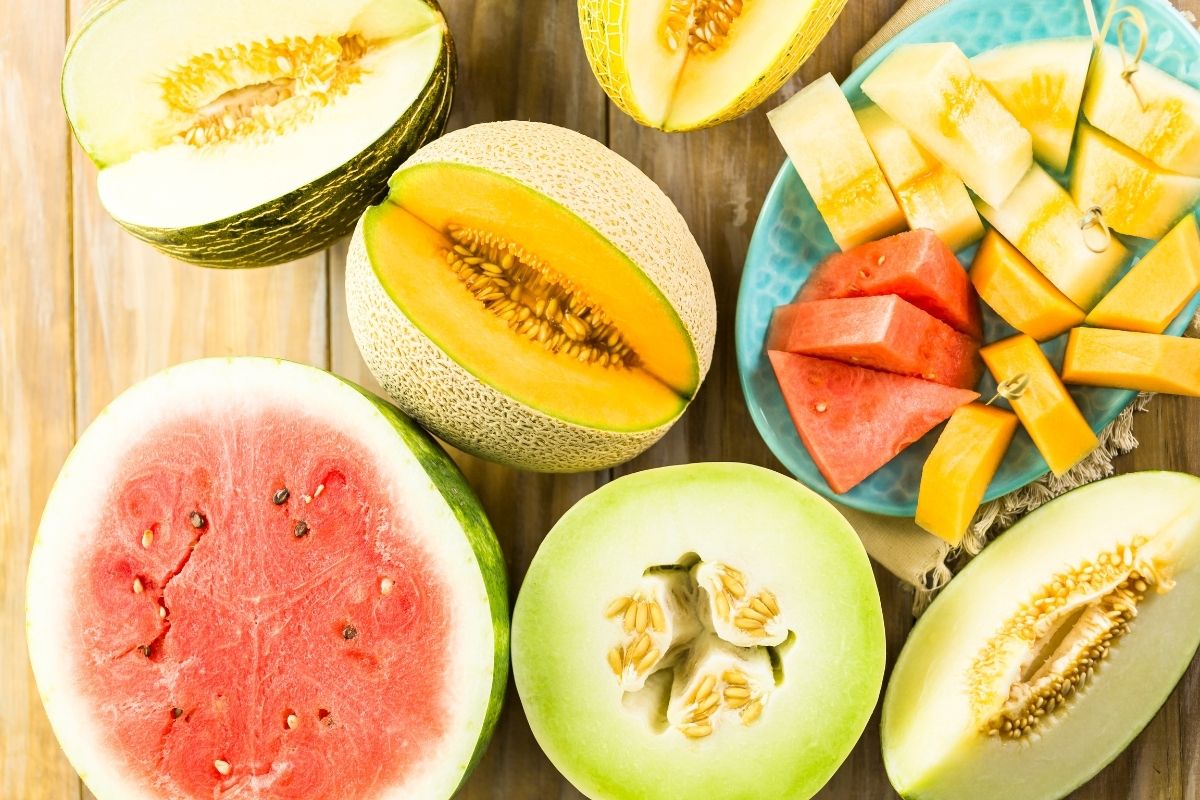
Due to the varying climates and growing conditions available in different parts of the world, various different species and subspecies can grow in different countries.
Each type of melon has its own distinct characteristics, ranging through taste, texture, shape, and color.
In this article, we’re taking a look at some of the most common and some of the more unique varieties of melon fruits.
You’ve probably heard of some of these species before but we can pretty much guarantee there’ll be something on here that makes you go “hmm”.
1. Watermelon
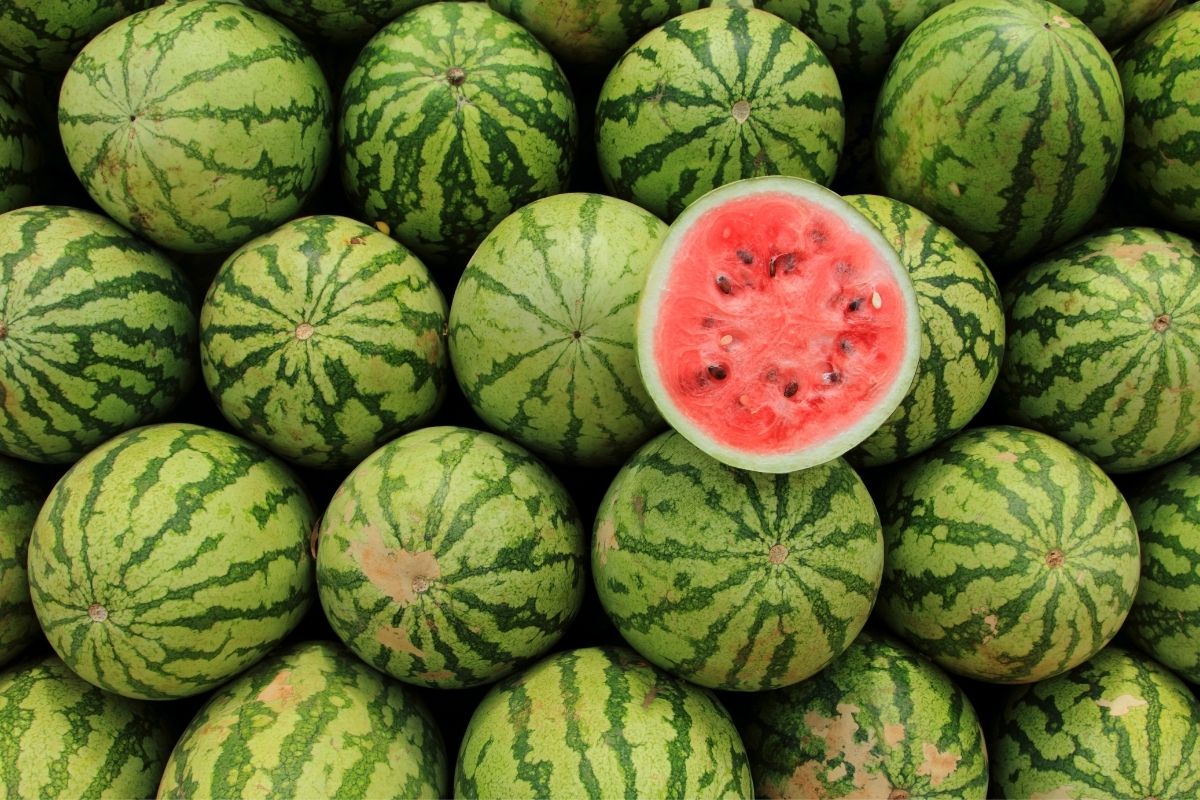
Perhaps THE classic melon variety, the watermelon is an essential fruit for any kind of summer gathering.
It makes a delicious snack when served on its own, with enough juice to make any eating endeavor at least a little bit messy.
They boast an almost cartoon-like appearance with different shades of green stripes across their tough outer shell.
The interior flesh then shines out in a bright pink-red color with black seeds standing out starkly in contrast.
They’re the perfect fruit to include in a fruit salad or cocktail as well, thanks to their very high water content.
2. Cantaloupe
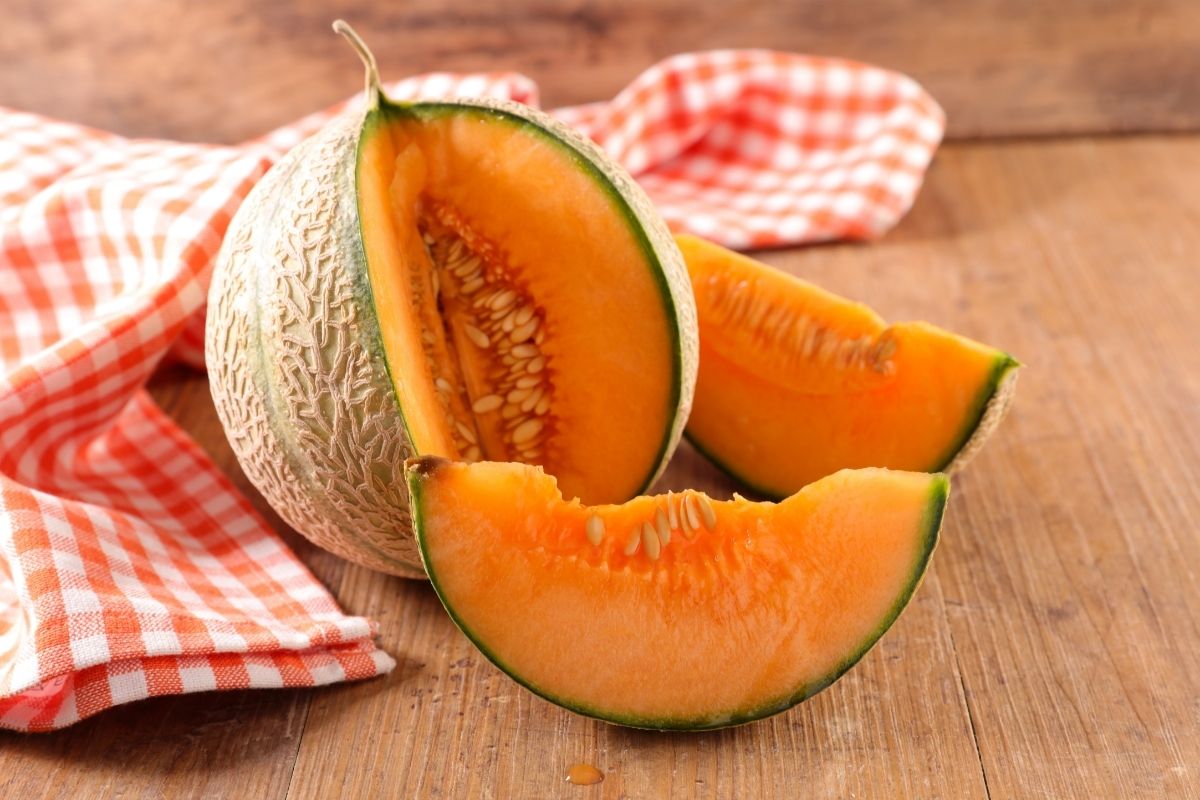
Another very common melon variety in the United States, the cantaloupe really demonstrates the difference in appearance you can have with melons when compared to a watermelon.
Cantaloupes have a grey/green outer skin with an almost cracked appearance.
The flesh inside is a contrastingly bright orange color, with a series of similarly colored seeds at its core.
It has a fairly firm texture with a sweet flavor that makes it very good for snacking on but lends itself a little more poorly than a watermelon to inclusion in fruit-based dishes.
Interestingly, there are also two different varieties of cantaloupe that exist: the European cantaloupe and the North American cantaloupe.
3. Honeydew
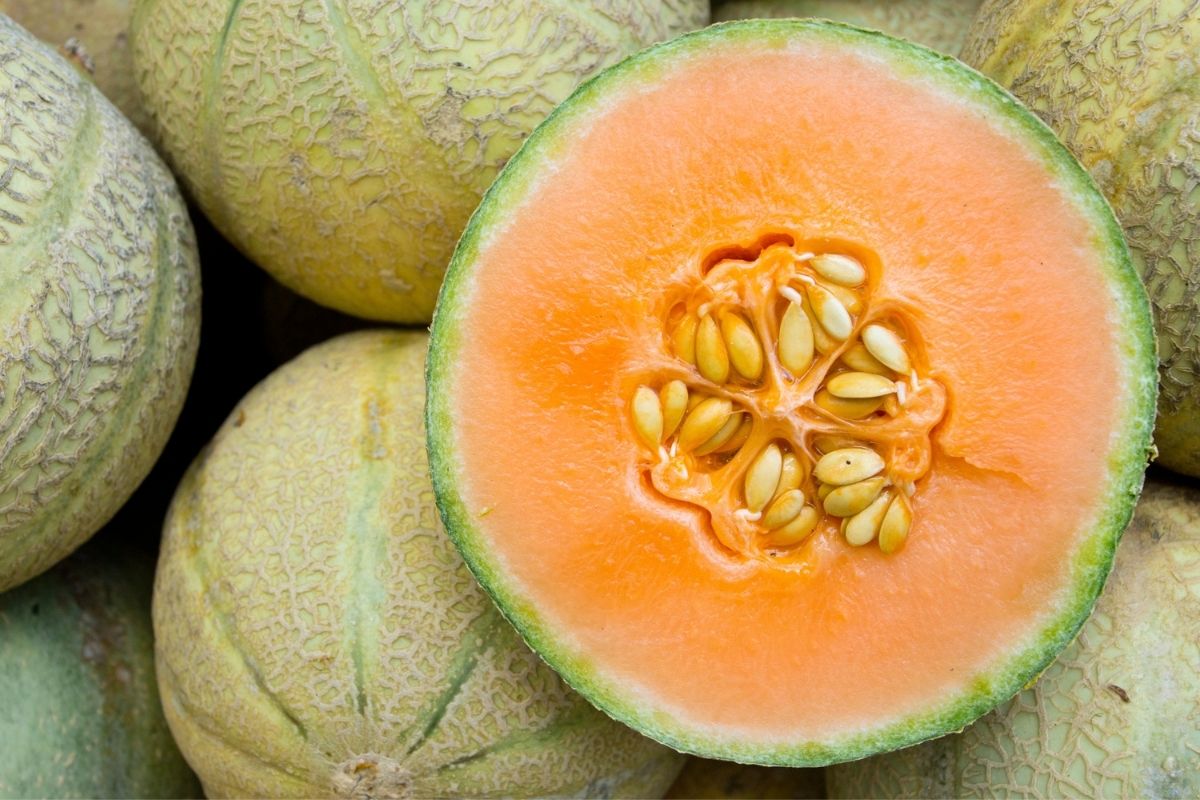
The honeydew melon is another common variety found in the United States and can be a wonderful addition to smoothies and cocktails, as well as working well in fruit salads.
They have a variety of different names in different parts of the world, including ‘white Antibes in France and Algeria as well as ‘Bailan melons’ in China.
Regardless of what you want to call them, honeydew melons have a fairly mild sweetness that doesn’t overwhelm the palate and provides a great backdrop for other flavors to shine through.
4. Winter Melon
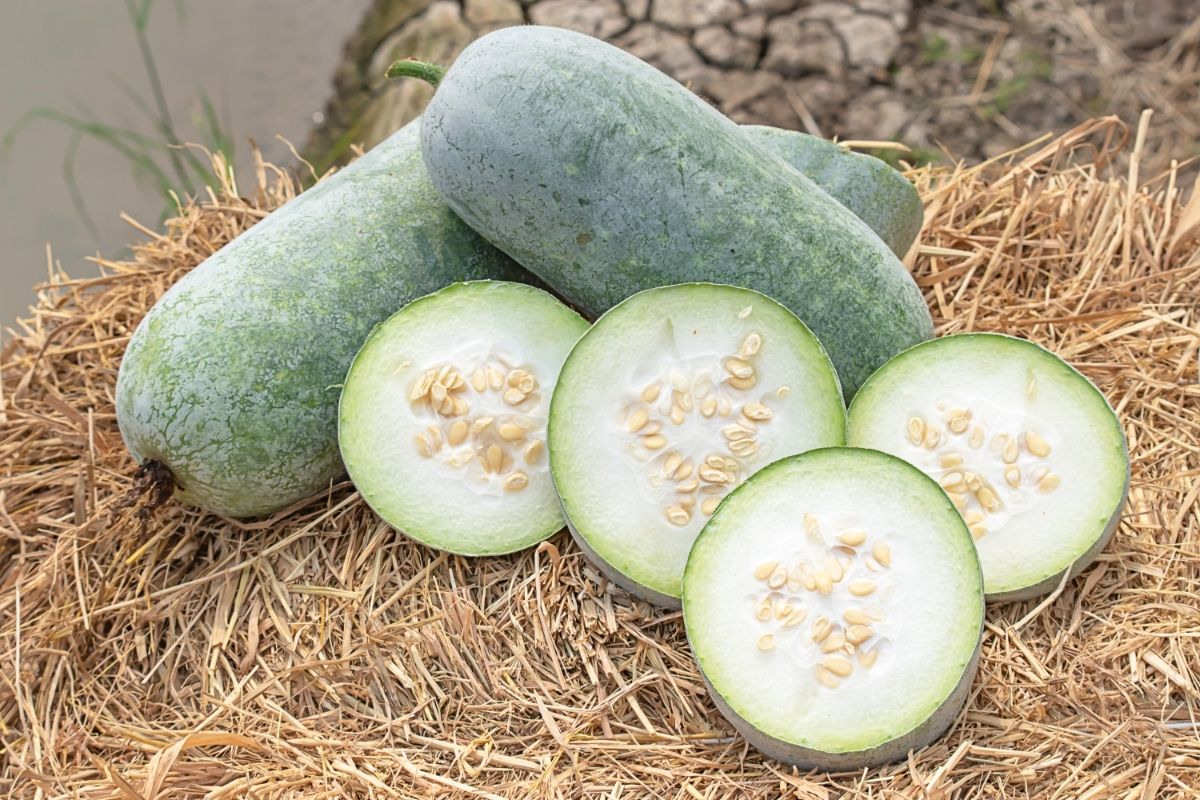
Also known as the wax gourd, this melon boasts a very tough, durable skin which allows it to last a very long time after being harvested.
This is where the name ‘winter melon’ comes from, even though the fruit is harvested mainly in the summer months.
Like the honeydew melon, this one has a fairly mild taste, though the winter melon is more commonly used in savory dishes than in sweet ones.
For example, in Vietnamese cuisine, the fruit is often made into stews and soups. However, in the Philippines, winter melons are also commonly made into candied filling for a sweet pastry dish.
5. Honey Globe Melon
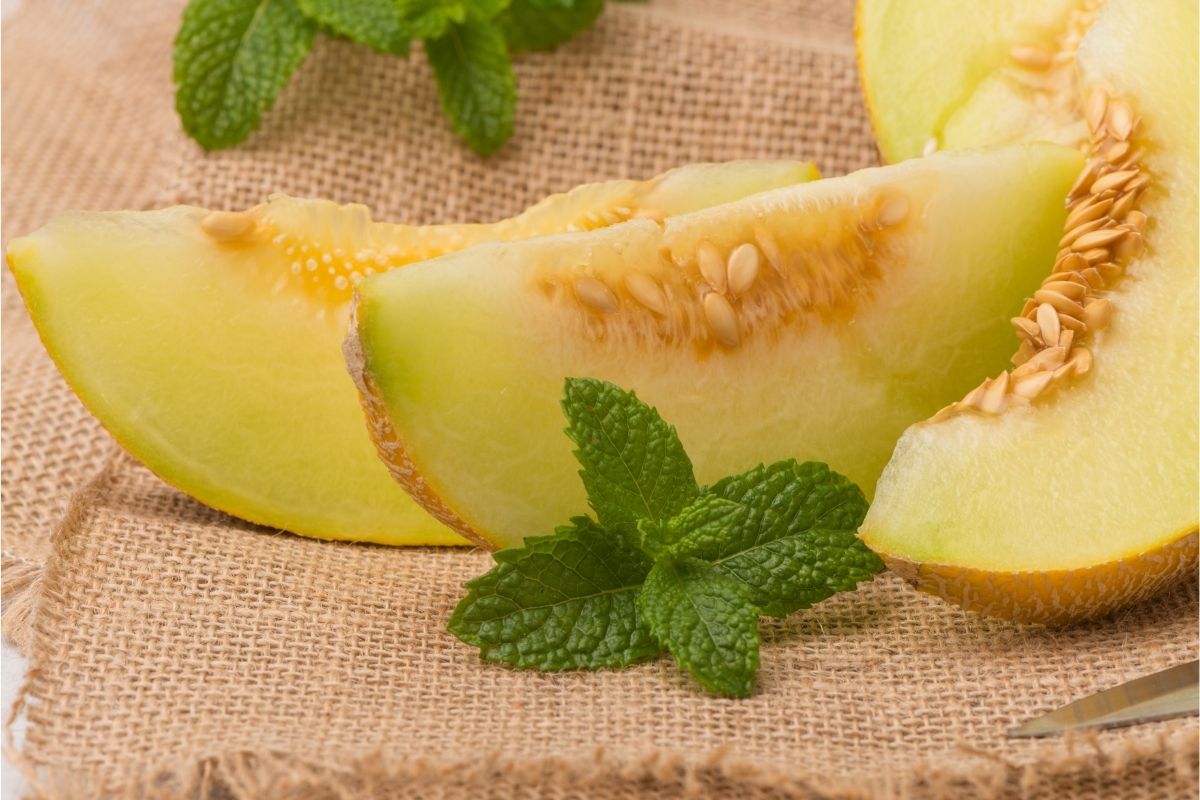
As the name might suggest, this fruit isn’t too dissimilar to honeydew melon, with both sporting a sweet flavor and pale-colored skin.
However, what sets the honey globe melon apart from other varieties is that it has one of the sweetest flavors in the world.
Of course, the name comes from this characteristically sweet taste and exceptionally round shape.
It has a very thick, bright white rind which gives way to pale green-colored flesh inside.
The seeds also form into a convenient cluster at the core of the melon, making it very easy to eat around them or remove them altogether.
6. Persian Melon
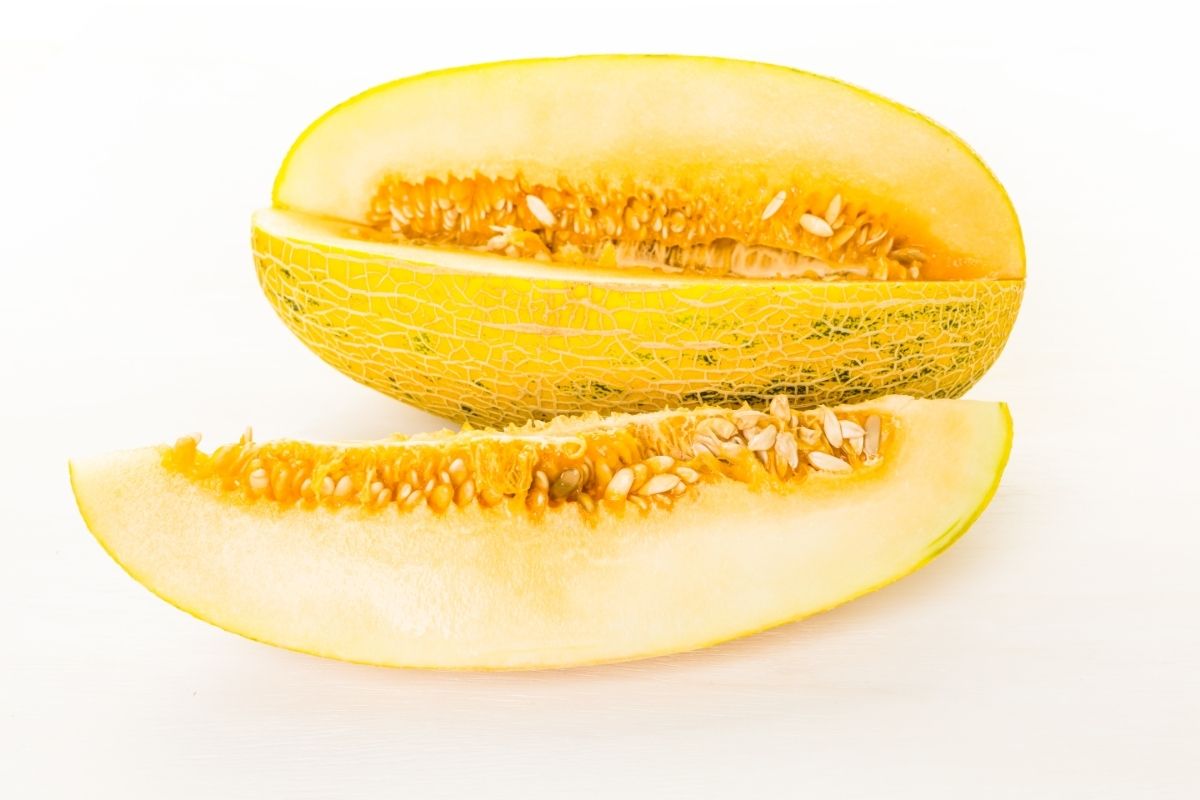
There are no prizes for guessing where this melon originates from, though that region is now known as Iran.
The melon has a fairly elongated shape with a pale yellow outer rind with faint, darker yellow stripes running from one end to the other.
They are said to have a pretty similar taste to a cantaloupe melon, though with a slightly milder flavor.
You won’t find these sold very commonly in North America but it might be easier to get your hands on some if you live in Europe.
7. Galia Melon
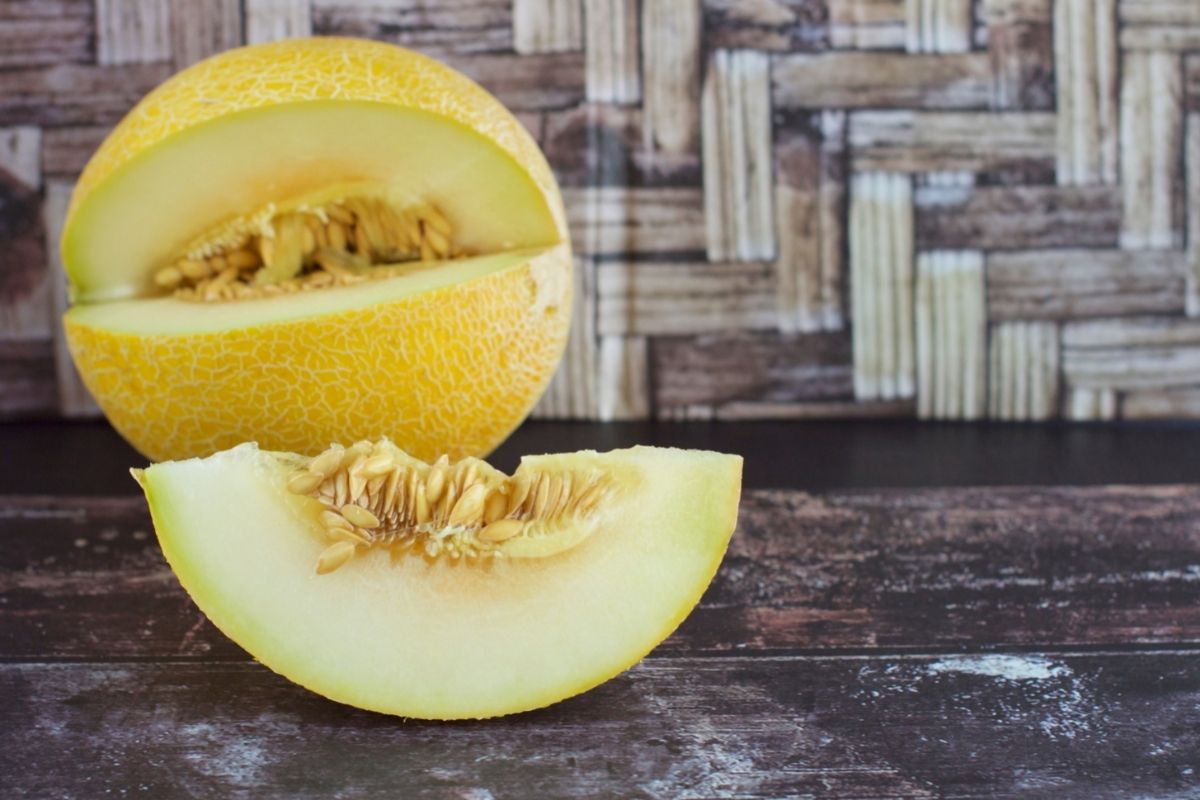
Interestingly, this melon was only created through artificial means in 1973, making it one of the youngest fruits on our list.
It was named after the daughter of Dr. Zvi Karchi, the man who invented the melon by crossing a cantaloupe with a honeydew.
The product of this hybrid was a melon that has a bright yellow, cracked exterior skin with pale green and white flesh inside.
They are said to be sweeter than a cantaloupe but have a generally similar flavor to both of their parent varieties.
This wonderfully sweet flavor and crisp texture has made them very popular across the world and are often served with berries, cream, or made into sorbet.
8. Snap Melon
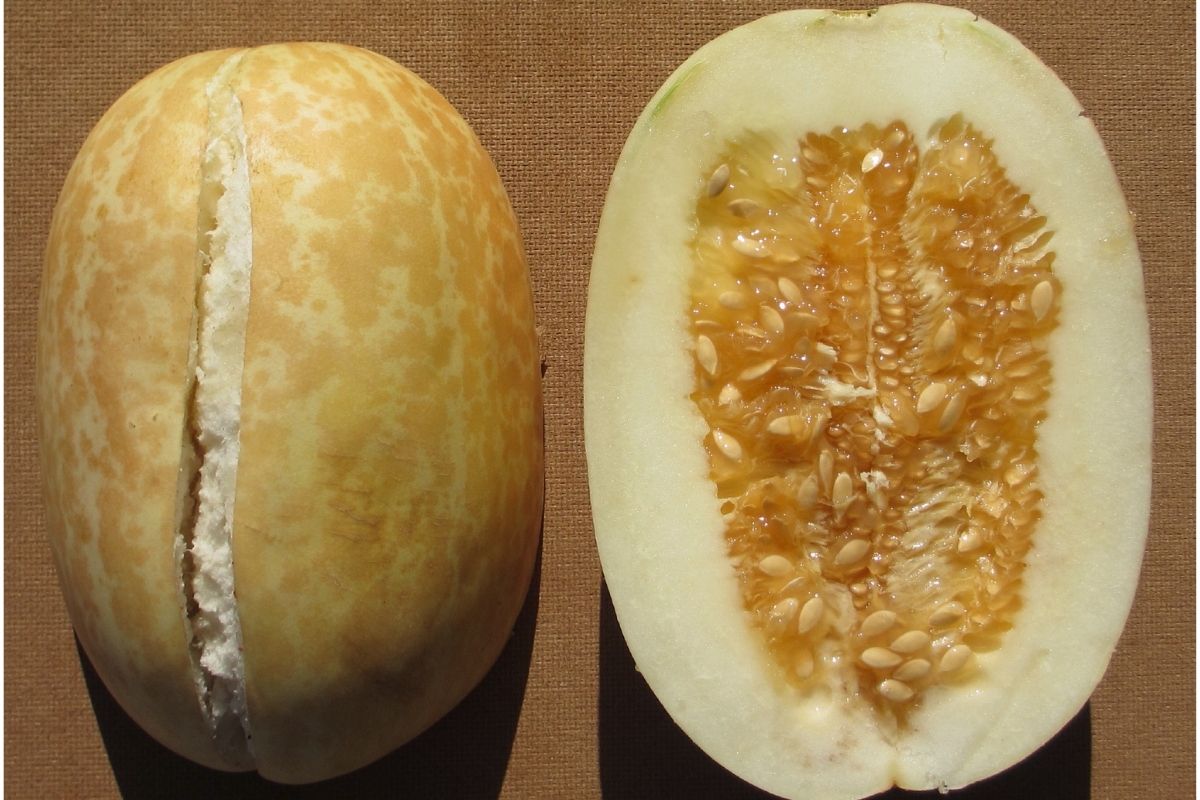
Snap melons boast a very peculiar appearance, flavor, and texture when compared with the other melons on our list.
Native to Asia and have an elongated shape and pale yellow skin with dark brown stripes running along it.
They have quite a sour, bitter flavor and are almost like a vegetable in cooking dishes in Asian cuisines,. Rather than served on their own as a fruity snack.
Interestingly though, the snap melon also produces an oil that is used for a variety of medicinal purposes.
9. Canary Melon
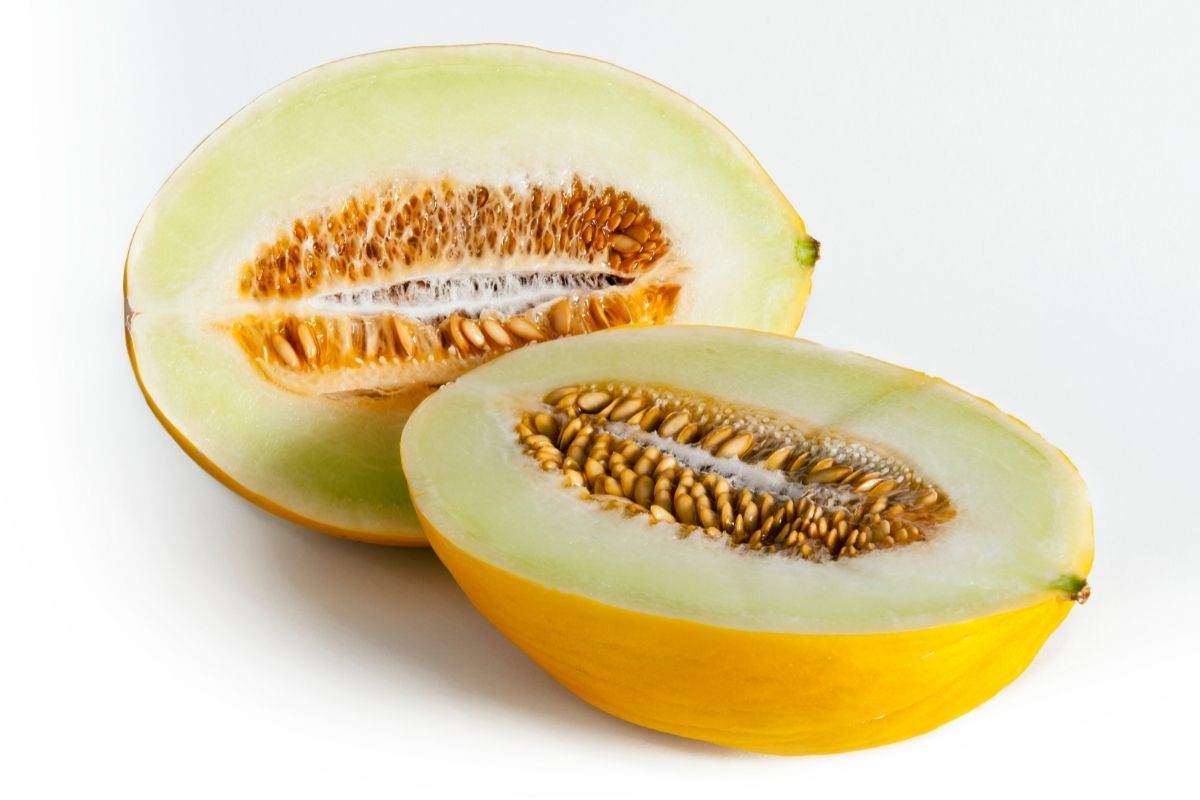
The canary melon really can’t be walked past without a second glance, thanks to its bright yellow exterior.
The exterior then gives way to a bright white flesh. Which has a similar flavor to honeydew melon, though slightly tangier.
In Asian cuisine, it is often served in fruit salads or on their own as a breakfast food. Though they are also commonly served with herbs and citrus fruits.
10. Bitter Melon

As the name suggests, the flavor of this melon certainly isn’t to everybody’s liking. And is much more like a vegetable than a fruit.
It’s native to India but is also found growing in Africa and the Caribbean.
The first thing you’ll probably notice about this melon is that it looks absolutely nothing like a regular melon!
Instead, it looks something like a large, green chili pepper with peculiar knobbly stripes running down its sides.
When you cut into the green skin, you’ll find bright white flesh inside with seeds dispersed fairly evenly throughout.
Again, it might not be the most delicious fruity snack. But it’s definitely one of the most unusual and exotic fruits on this list!
11. Crenshaw Melon

Another melon with a fairly unique aesthetic, this one boasts a significantly more palatable, sweet flavor than the previous one we looked at.
It’s a hybrid between a Persian and a Casaba melon and has a fairly mild flavor.
However, the main appeal of this variety of melon is its texture. Boasting a really tender and juicy flesh that makes them wonderful to eat on their own, as a snack.
Interestingly, you’ll also find this melon appearing on some charcuterie boards. As its mild flavors pair well with many other types of food.
12. Santa Claus Melon
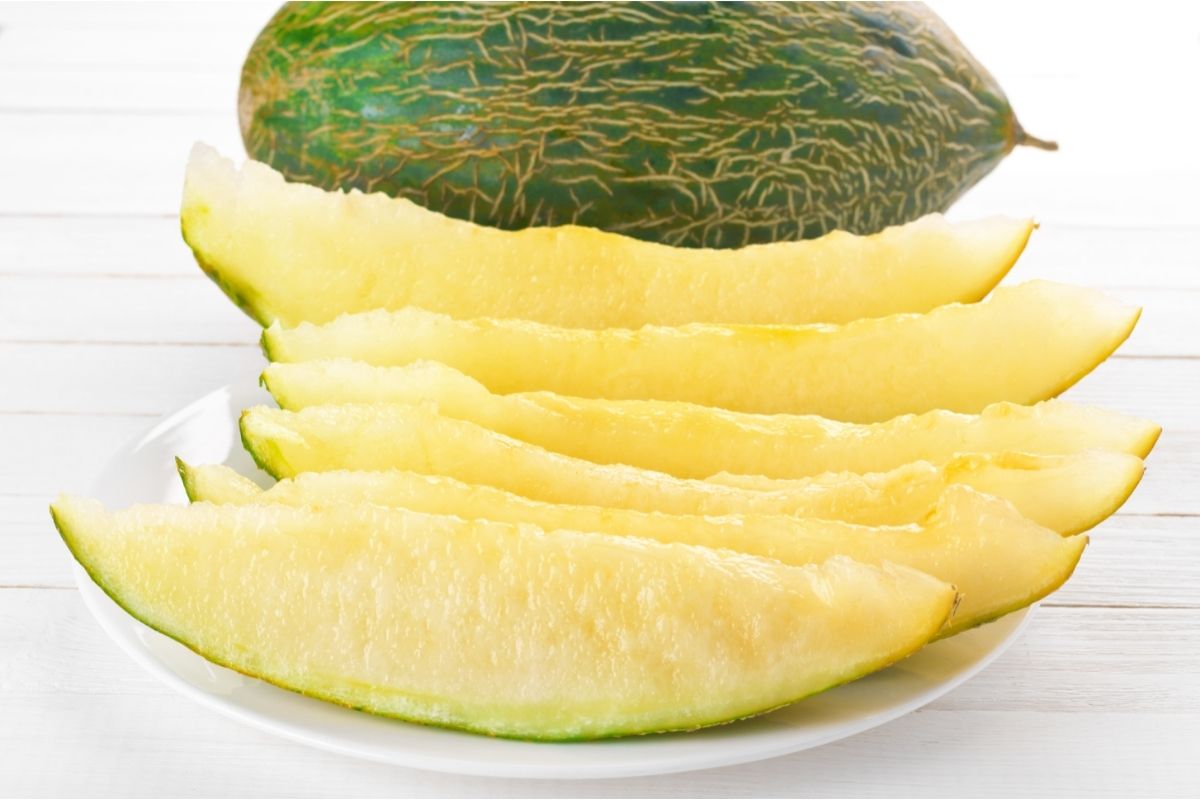
You read that right, there is actually a melon named after Santa Claus!
It originates in Spain, where its name, ‘piel de sapo’ translates as ‘toad skin’. Bbut that’s a lot less interesting than Santa Claus.
It’s another melon that is said to have a similar flavor to honeydew melons, with a mildly sweet flavor.
It has a somewhat elongated, dark green outer skin with pale green/white flesh inside.
Interestingly, one of the great benefits of growing this type of melon is that it keeps for roughly 6 weeks longer than most other varieties after they harvest it.
13. Ananas Melon
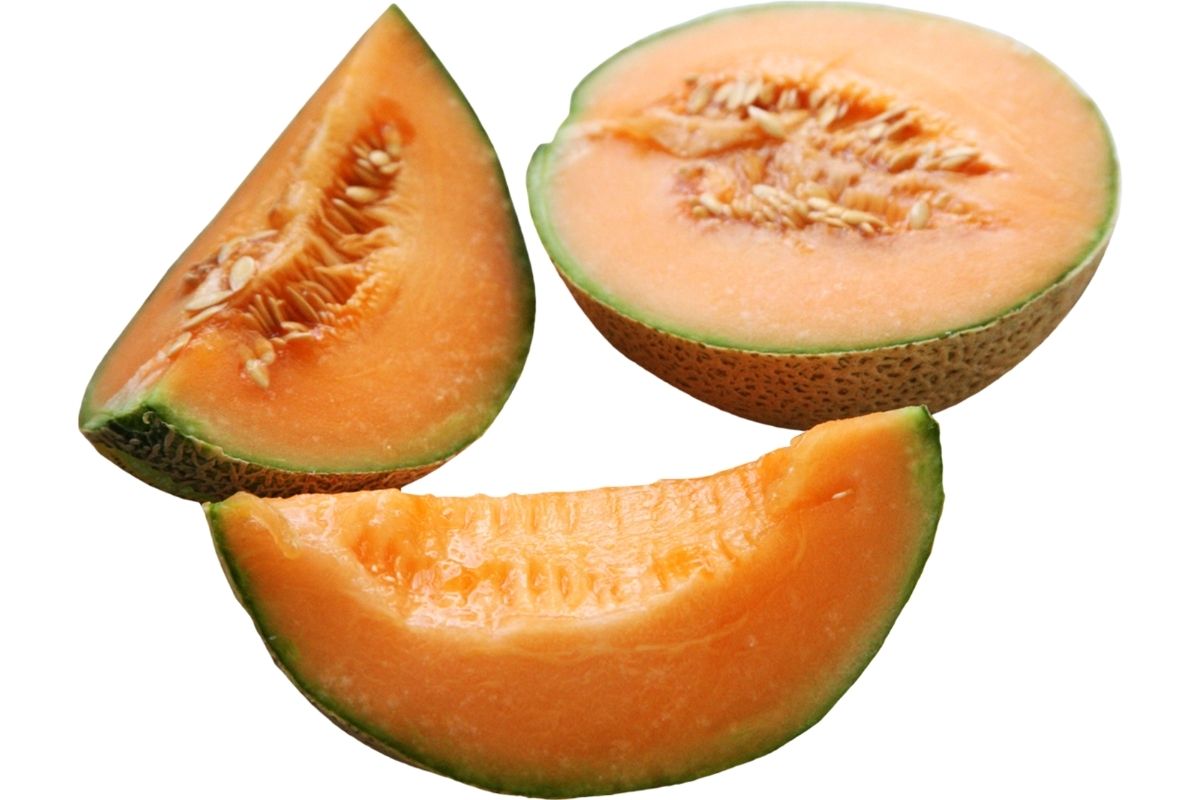
Any linguist will tell you that the word ‘ananas’ means ‘pineapple’ in pretty much every language in the world except English.
The sweetness and color of pineapples are where this melon gets its name. Boasting a remarkably sweet flavor and bright yellow skin.
The flesh inside is a pale yellow color and houses some almost jelly-like seeds at its core.
In terms of appearance, this melon most resembles a cantaloupe, thanks to its slightly cracked texture.
14. Crane Melon
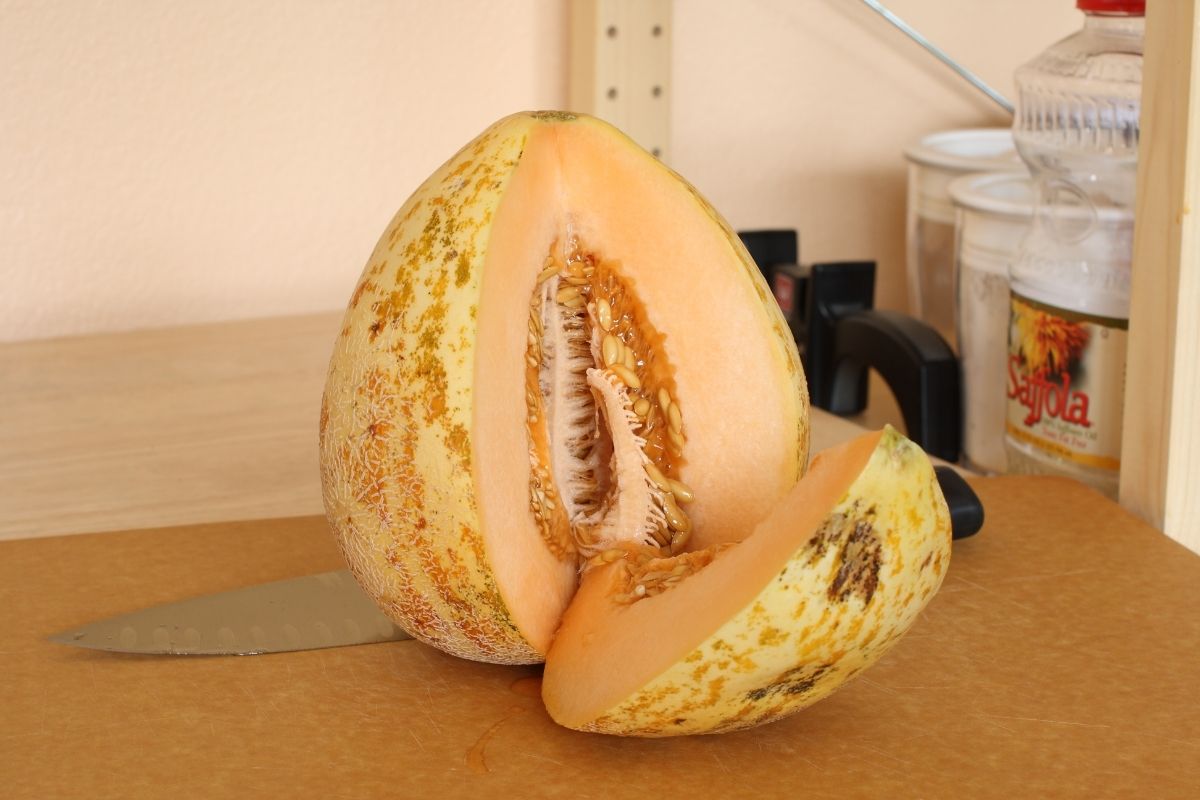
Crane melon is a variety from California in the early 20th century. And it has a very unique appearance compared to other varieties.
Its skin is often a blotchy mixture of white, green, and brown colors, while the interior boasts shades of orange.
Again, the seeds at their core sit in a jelly-like liquid that most people don’t enjoy. Hence, are usually removed before eating.
However, the flavor of this melon is incredibly sweet and it produces a delightful floral aroma.
Final Thoughts
Who knew there were so many different varieties of melon fruits growing in the world?
In fact, this list only scratches the surface of all the varieties that exist. And there are dozens more that we simply didn’t have the space to include.
Kudos to you if you can think of any other melon varieties that we haven’t included in this list!
Now that you know how to use neem oil for plants make sure to check out our other articles:
Effective Ways To Get Rid Of Russet Mites On Houseplants
Springtails on Houseplants & Effective Ways to Get Rid of Them?
How to Kill Whiteflies on Houseplants? Plus Organic & Inorganic Methods







